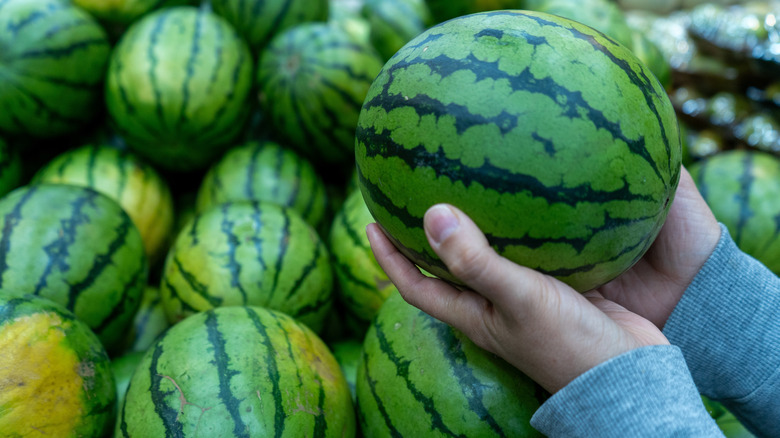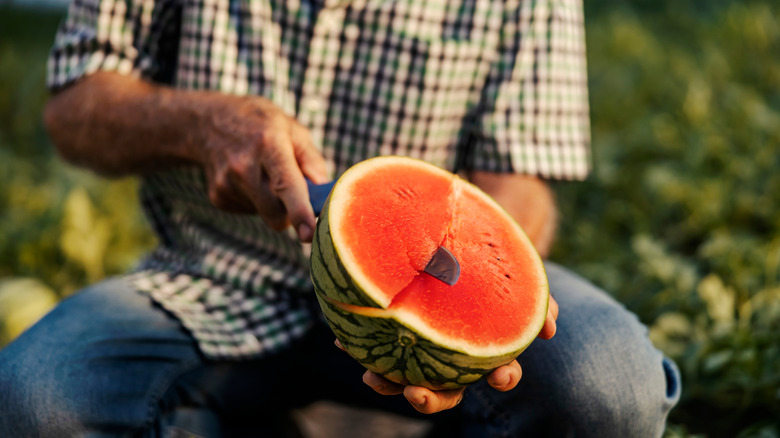When Exactly Is Watermelon Season?
When watermelon is good, it's really good: juicy, sweet, and deeply refreshing, like the edible version of diving into a pool on a brutally hot day. But when it's bad? Mealy, bland, and maybe even sour. Blech. It all comes down to knowing when each summer fruit tastes best and buying a watermelon at the right time of year. So when exactly is watermelon season, and how can you make sure you're getting a good one? Let's slice into it.
In the States, watermelon is at its peak from May through September, with the true sweet spot typically landing between June and August. This is when the sun's doing its job, the fields are lush, and watermelons everywhere are naturally ripening into juicy perfection. Watermelons are grown in more than 40 states, but most of what you'll find in the store hails from warm-weather regions like Florida (early season melons, usually hitting stores in April–May), Texas and Georgia (summer staples, June–August), or California and Arizona (late summer supply, July–September).
If you're buying a watermelon in the dead of winter, first ask why you're setting yourself up for disappointment. These melons are likely imported from Mexico or Central America, meaning they've traveled a long way and just won't taste as fresh. And if you're wondering which country produces the most watermelon, the answer may surprise you: China. But imported melons rarely reach the same peak flavor as their summer counterparts — just like those off-season tomatoes or that sad February peach.
A good watermelon is worth the wait
Now that you're on the hunt, it's good to know your watermelon types. Seedless versions are the most common in stores, but don't let the name fool you; there are still seeds. They're just softer and actually edible. Seeded watermelons have gotten harder to find, but many swear these have superior flavor and texture. Mini or "personal" watermelons are obviously adorable and great for small households, but their flavor can vary more than full-size melons.
Picking out the best watermelon at the store is also a fine art. But here's what experts say actually works: Look for a creamy, yellowish patch on one side. That's where the melon sat on the ground. The deeper the yellow (think butter, not beige), the longer it ripened in the sun. If you insist on tapping, listen for a deep, hollow sound, not a dull or flat thud. Hollow means it's full of water and ripe; dull might mean it's past its prime or you're about the experience the tragedy of the underripe melon.
Uniformly sized, heavy watermelons are a better bet than irregularly shaped ones. A whole watermelon will last a week on the countertop, but for longer storage, pop it in the fridge. A whole watermelon takes up space, yes, but chilling slows ripening and helps preserve that crisp texture. So skip the off-season imports, shop farmers' markets when you can, and use your eyes and hands — not just your ears — to pick a winner. A peak season watermelon is always worth the wait.

